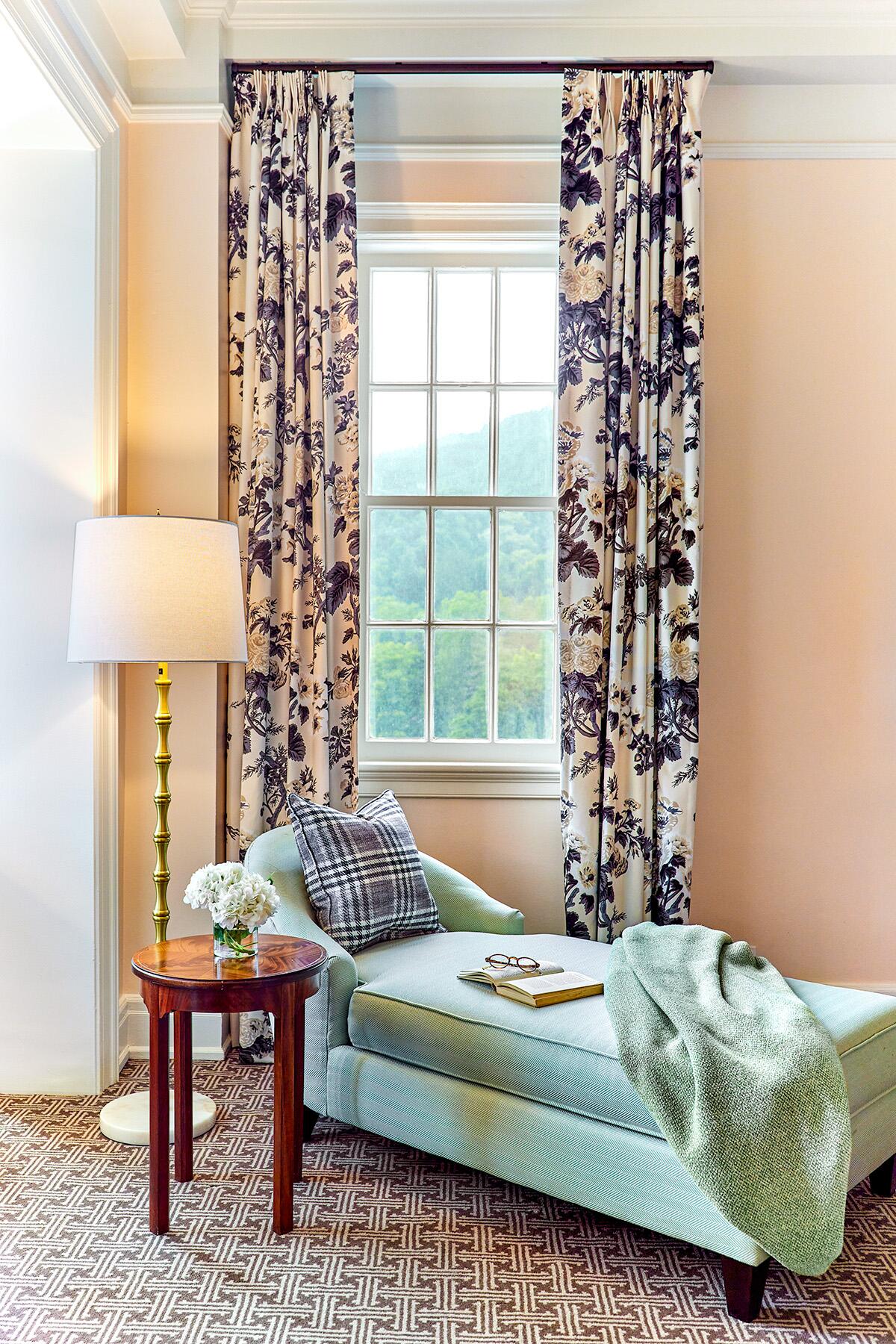Active preservation does not let things languish in the past; it repairs, maintains, and enhances the beauty that was already there.
There is an unmistakable sense of grandeur as your car rolls down the driveway of the Omni Homestead Resort in autumn–the leaves have turned, the air is crisp, and the sprawling property emerges like a hidden castle. By mid-fall, the weather is perfect for light layers: collared-shirts, padded vests, and blazers are the norm here, contributing to a certain kind of autumnal, preppy milieu.
The Homestead dates its founding back to 1766—a full decade before the adoption of the Declaration of Independence—when Thomas Bullitt, a military officer born in colonial Virginia, purchased 300 acres of land and built a lodge on the present resort grounds. The big attraction then, as it is now, was the area’s naturally-occurring hot springs: before the advent of pharmaceutical drugs, patrons flocked to the springs for its curative properties and to rest amidst the invigorating mountain air—a tradition that has been passed on to generations of families in Virginia, the greater American South, and a long list of presidents, dignitaries, and celebrities.
A periodic and thorough renovation is critical for such a historic property, which has been undertaken with gusto after a change in Homestead’s ownership. Iconic features of traditional Southern architecture and interior design have been preserved and elevated: The red brick exterior has been repointed; a stately wooden porch that wraps around the main wing has been repainted and refurnished; the caps of the high Corinthian beams that line the Great Hall—which functions as the main lobby—have been chiseled out for more definition. The interiors of the Great Hall are luxurious, but comfortably inviting: you won’t see Mandarin Oriental’s decadent Chihuly glass sculpture or the original Katz mural adorning The Langham, but there are rows of plush velvet settees and colorful lounge chairs placed over a new, custom-designed floral carpet—a refreshed, but still decadent, design choice that makes the space a joy to linger in with a cup of tea and plate of sweets.
Recommended Fodor’s Video

A more formal afternoon tea service is hosted in the American Audubon Dining Room, the resort’s white tablecloth dining area with sparkling chandeliers and preserved wooden floors that date back to 1902. The window draperies are all but gone, allowing sunlight to wash through the high beams and arches as you dine. The highlight is the collection of original Audubon prints that hang by the entryway—an absolute treat for art enthusiasts and bird-lovers—that gives the space a sophisticated, residential feel.

A resort can choose to be traditional in operation and design, but compromises in functionality, cleanliness, and service make a property feel dated. The lapses that occurred during the property’s multi-year renovation process have been addressed. The restaurants, as well as the indoor pool and the spa have fully reopened; the service is agile, and the sound system has been replaced. The rooms have been updated with an emphasis on vintage color palettes and comfortable surfaces—you won’t find any ultra-chic stiff leather chairs that cramp your behind, nor the white-beige-brown trifecta—which creates the feeling of staying at a stylish countryside cottage.
Some amenities are not completely modernized, though depending on who you ask, that is a quaint thing. The elevators, for example, are old (and not in a charming, manually-operated grill-door way), and you will never know where any of them are until the door opens; there is an occasional light switch and an electrical plug that doesn’t work.
But you don’t trek over to the remote Homestead for elevators and light switches. There are acres of rolling greens and mountainsides to explore, all within the privacy of the resort grounds. The Cascades Gorge Trail is beautifully serene during the autumn season; there is a certain kind of luxury afforded by a private trail, which allows you to soak in the turning leaves and the pooling waterfalls in silence. Laura Cooper, the resort’s in-house naturalist and guide, is a gentle, affable figure and a former high school teacher in Bath County who will tell you all about her favorite plants on the trail. She’s been a fixture at the Homestead for decades and even taught the resort’s maître d’ in high school; her love for the beauty of the Allegheny Mountains was self-evident as she stooped over to inspect a spider hanging inside a tree. “I don’t know who this little guy is,” she said, gently clearing a brown leaf from the dewy web. “But I think he’s resting.”
People like Cooper are an embodiment of the Homestead’s operational philosophy of active preservation as it adapts to the changing times. Active preservation does not let things languish in the past; it repairs, maintains, and enhances the beauty that was already there, to preserve what matters most: the palpable emotional connection between the Homestead and its people. And as I ventured back to the Great Hall after an afternoon of activities to sit next to the fireplace and eat a soft chocolate cookie, I felt an inkling of that connection—a feeling of warmth that was enough to lull me to a pleasant, light doze.





